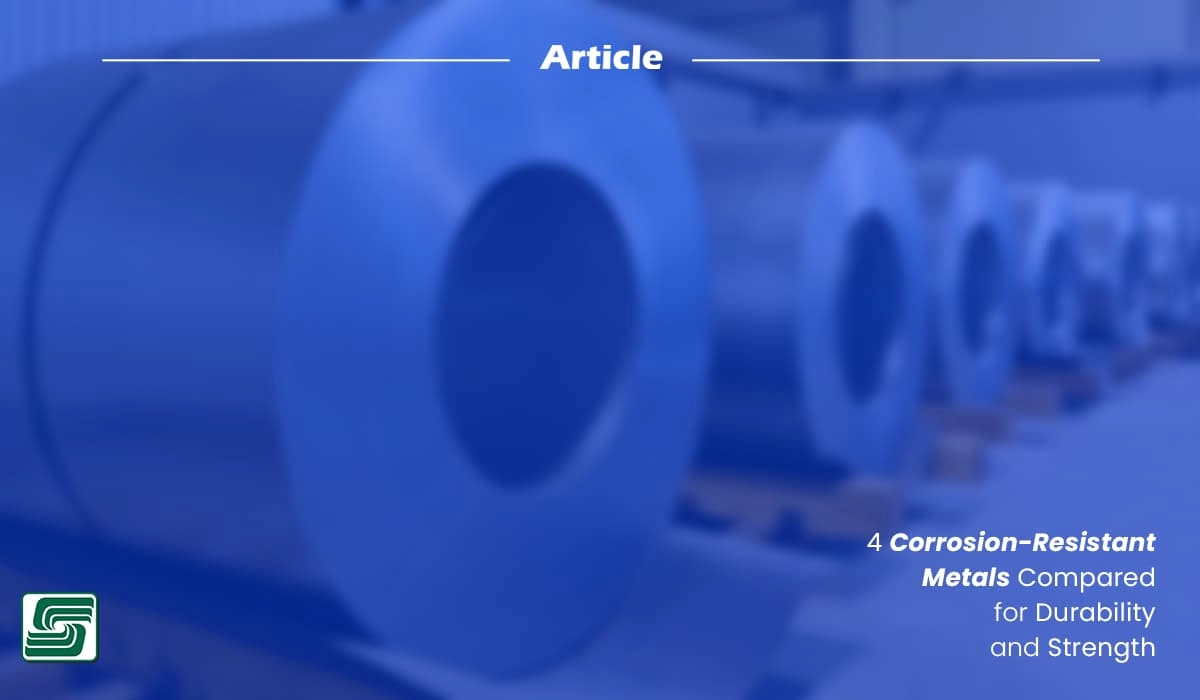Blog
316L vs 304: Which Stainless Steel is Best for Your Jewelry?

Stainless steel is a popular metal alloy known for its durability, corrosion resistance, and shiny appearance. It mainly consists of iron, carbon, and at least 10.5% chromium, which forms a thin, invisible layer that protects the metal from rust and stains. This makes stainless steel ideal for a variety of uses, from kitchenware and medical tools to jewelry.
Among the many stainless steel grades, 304 and 316L are the most common in consumer products. Both are austenitic stainless steels, meaning they have a face-centered cubic crystal structure that offers good formability and strength. Grade 304 is often called “18/8 stainless steel” because it contains about 18% chromium and 8% nickel. It’s widely used due to its versatility and cost-effectiveness.
Grade 316L, on the other hand, includes a small but important addition: molybdenum. This element enhances 316L’s resistance to corrosion and makes it a preferred choice for harsher environments and higher-end applications like jewelry and marine equipment. The “L” stands for low carbon, which improves the steel’s weldability and reduces the risk of corrosion at welded joints.
In , stainless steel combines strength, rust resistance, and aesthetic appeal, with 304 and 316L standing out as top choices depending on the use and environment.
Chemical Composition and Structure Differences

Both 304 and 316L stainless steel belong to the austenitic family, meaning they have a similar crystal structure that offers good strength and corrosion resistance. Still, their chemical makeup sets them apart, affecting how they perform in different environments.
| Element | 304 Stainless Steel (%) | 316L Stainless Steel (%) |
|---|---|---|
| Chromium (Cr) | 18 – 20 | 16 – 18 |
| Nickel (Ni) | 8 – 10 | 10 – 14 |
| Carbon (C) | Up to 0.08 | 0.03 max (low carbon) |
| Molybdenum (Mo) | None | 2 – 3 |
| Manganese (Mn) | Up to 2 | Up to 2 |
| Iron (Fe) | Balance | Balance |
Breakdown of 304 Stainless Steel
304 is basically the workhorse stainless steel. It’s got a good balance of chromium and nickel, which makes it rust-resistant and easy to form. The carbon content is slightly higher than in 316L, which means it’s harder but less resistant to corrosion in harsh environments.
Breakdown of 316L Stainless Steel
316L lowers the carbon content to minimize carbide precipitation, which improves its corrosion resistance, especially against chlorides and salty environments. The big difference is the addition of molybdenum, which boosts resistance to pitting and crevice corrosion.
How These Differences Affect Properties
- Corrosion Resistance: The molybdenum in 316L makes it tougher against saltwater, sweat, and chemicals. 304 can handle everyday corrosion but may pit or rust quicker in salty or harsh settings.
- Strength and Durability: Both are strong, but 304’s higher carbon means slightly better hardness. 316L’s lower carbon improves weldability and reduces brittleness.
- Suitability: 316L works better in marine, medical, or high-exposure situations, while 304 is fine for general use and indoor applications.
Key Physical and Mechanical Properties Comparison

When comparing 304 stainless steel vs 316L, several physical and mechanical traits stand out that affect everyday use, especially in jewelry and other consumer products.
Corrosion Resistance in Real-World Use
- 304 Stainless Steel: Handles everyday exposure well—resists sweat, water, and mild chemicals. However, it can rust or tarnish when exposed to saltwater or harsh chemicals over time.
- 316L Stainless Steel: Includes molybdenum, which boosts resistance against salt and chemicals. This makes 316L a top pick for jewelry worn daily, especially in humid, salty, or sweaty conditions.
Strength and Durability
| Property | 304 Stainless Steel | 316L Stainless Steel |
|---|---|---|
| Tensile Strength | Moderate | Slightly higher |
| Hardness | Good | Better |
| Durability | Durable for general use | Ideal for heavy wear environments |
316L generally offers better strength and durability, making it more resistant to dents or scratches over time.
Workability and Machining
- 304 Stainless: Easier to work with and shape, which lowers production costs. It machines well for most standard jewelry designs.
- 316L Stainless: Slightly harder to machine due to its molecular structure but provides a denser, more robust final product after fabrication.
Weight Considerations
Both 304 and 316L stainless steels are very close in weight, so there’s no noticeable difference when worn as jewelry or used in everyday items.
Corrosion Resistance Why 316L Is Preferred in Jewelry
316L stainless steel stands out mainly because of its molybdenum content. This extra element boosts its ability to resist corrosion much better than 304. Molybdenum helps protect the metal against rust, tarnish, and damage caused by salt or chemicals, which is why 316L is a top choice in jewelry.
When you wear jewelry every day, it gets exposed to sweat, water, lotions, and even salt from the air. 316L handles all of this without corroding or discoloring. That’s why it’s common in hypoallergenic jewelry — it reduces skin irritation and keeps your pieces looking fresh longer.
Real-world examples where 316L’s corrosion resistance makes a big difference include:
- Marine environments where saltwater quickly ruins ordinary metals
- Medical-grade jewelry requiring non-reactive metal for sensitive skin
- Everyday jewelry that faces constant exposure to sweat and cleaning products
In comparison, 304 can start to show signs of wear faster, especially in harsh or humid settings. For anyone needing jewelry that lasts and stays safe on the skin, 316L is usually the preferred steel.
Hypoallergenic Properties What to Expect
When choosing stainless steel jewelry, especially if you have sensitive skin, nickel content is a big deal. Both 304 and 316L stainless steel contain nickel, which can cause skin reactions for some people. However, 316L has a lower nickel content and tighter alloying, making it less likely to irritate skin.
Nickel Content and Skin Reactions
- 304 stainless steel has more nickel, which can sometimes cause redness, itching, or rash in sensitive users.
- 316L stainless steel is known as “surgical grade” because it minimizes nickel release and is less reactive.
Which Steel Is Safer for Sensitive Skin
If you’re prone to allergies or sensitive skin, 316L is typically the safer bet. It’s less likely to trigger skin irritation and is widely used in hypoallergenic jewelry.
Relevance for Jewelry Buyers
For people in the U.S. market looking for everyday wear or gifts, 316L stainless steel offers peace of mind. It combines durability with hypoallergenic qualities, making it ideal for rings, bracelets, and necklaces that touch the skin all day long. If skin sensitivity is a concern, 316L should be your go-to stainless steel grade.
Cost Analysis Which Offers Better Value

When it comes to pricing, 304 stainless steel is generally more affordable than 316L. The main reason for the price difference is the addition of molybdenum in 316L, which boosts its corrosion resistance and overall durability. This makes 316L a bit pricier but worth it for situations where longevity and performance matter.
316L’s premium is justified if you’re looking for jewelry or products that need to withstand harsh conditions like saltwater, sweat, or chemicals without tarnishing or rusting. Over time, 316L tends to hold up better, meaning fewer replacements or repairs.
Aesthetic Differences Between 304 and 316L Stainless Steel
When it comes to appearance, both 304 stainless steel and 316L offer a clean, shiny finish that looks great for jewelry and everyday items. Here’s how they compare in surface finish, shine, and aging:
Surface finish and shine
- 304 Stainless Steel: Has a bright, reflective surface but is slightly easier to scratch. It holds polish well, so it looks good when new or freshly cleaned.
- 316L Stainless Steel: Offers a slightly richer, brighter shine thanks to its chemical makeup. It resists surface dulling better over time.
Aging and discoloration
- 304 Stainless Steel: Over time, 304 may develop minor discoloration if exposed to harsh chemicals or saltwater regularly. Scratches can be more noticeable on this grade.
- 316L Stainless Steel: Holds up better against discoloration and tarnish due to added molybdenum. It’s more resistant to surface wear, keeping its look longer in tough conditions.
| Feature | 304 Stainless Steel | 316L Stainless Steel |
|---|---|---|
| Initial Shine | Bright and reflective | Brighter and richer |
| Scratch Resistance | Moderate | Higher |
| Discoloration | Can show with exposure | Less prone to tarnish |
| Long-Term Look | May dull or show wear | Maintains shine and smoothness |
For U.S. buyers, especially those shopping for jewelry, 316L looks newer longer and needs less polishing compared to 304—making it a favorite for high-quality pieces that are worn daily.
Environmental and Maintenance Considerations
When it comes to cleaning and caring for 304 vs 316L stainless steel jewelry, both are fairly low maintenance, but there are some differences to keep in mind.
Cleaning Tips:
- Use mild soap and warm water to clean both types regularly.
- For tougher grime, a soft toothbrush works well with 316L or 304 stainless steel.
- Avoid harsh chemicals or bleach, which can damage the finish, especially on 304 steel.
- Dry your jewelry thoroughly to prevent water spots or potential corrosion.
Maintenance Differences:
- 316L stainless steel is more resistant to corrosion and tarnish, so it generally holds up better with minimal upkeep.
- 304 stainless steel can be more prone to rust and discoloration over time, especially if exposed to sweat, saltwater, or chemicals often.
- If you’re active or live in humid areas, 316L requires less frequent cleaning and will last longer looking good.
Sustainability Notes:
- Both 304 and 316L stainless steel are recyclable and durable, making them eco-friendly choices compared to plated or coated metals that wear out faster.
- Choosing long-lasting stainless steel jewelry means less waste and fewer replacements.
- 316L’s longer lifespan gives it an edge for sustainable wear.
In , while both grades are easy to maintain, 316L stainless steel jewelry fits the lifestyle of many U.S. customers who want hassle-free, durable pieces that stay looking fresh with simple care.
Applications When to Use 304 vs 316L Stainless Steel
When choosing between 304 stainless steel vs 316L, the key is matching each to the right use.
Jewelry
316L stainless steel is the go-to for quality jewelry, like what JinbaoJewelry offers. It’s preferred because of its better corrosion resistance and hypoallergenic properties. Rings, bracelets, and necklaces made with 316L hold up well against sweat, water, and skin oils without tarnishing or causing irritation. While 304 can be used in jewelry, it’s more prone to rust and discoloration, making it less ideal for everyday wear.
Kitchenware
304 stainless steel is widely popular in kitchen tools, cookware, and appliances. It’s food-safe, durable, and easier to work with, which keeps costs down. For most home kitchens, 304 performs well with exposure to moisture and cleaning agents. However, in professional or marine kitchen environments where salt and harsher chemicals are common, 316L takes the lead because of its extra corrosion resistance.
Medical and Industrial Use
In medical devices and industrial settings, 316L stainless steel is usually preferred. The low carbon content and addition of molybdenum boost its resistance to corrosion and pitting in harsh conditions. It’s trusted for surgical instruments, implants, and chemical processing equipment. Meanwhile, 304 stainless steel is still common in less demanding industrial parts where high corrosion resistance isn’t critical.
Choosing the right stainless steel grade often comes down to exposure risks and budget. For everyday jewelry, especially from trusted brands like JinbaoJewelry, 316L offers comfort and durability. For kitchen and general use, 304 is solid and cost-effective. For tougher environments, 316L is worth the investment.
